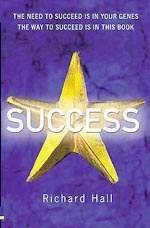FOOD & BEVERAGES
As consumers nationwide toast the moment, their glasses reveal the cravings of today--premium spirits. "Over the past 15 years, there has been a trend toward people drinking less but drinking better," says David Ozgo, chief economist at the Distilled Spirits Council of the United States. He points out that the super-premium segment has enjoyed double-digit growth over the past four or five years.
In this industry, life is good, but barriers to entry can be quite sobering. Production costs are high, distribution regulations are difficult, and shelf space is a hot commodity. But you can measure up by standing out.
Matti Anttila's refined drinking habits and frequent visits to Rio de Janeiro clued him in to his niche. The former investment banker noticed the lack of a super-premium brand of cachaça, a Brazilian spirit, and resolved matters by launching Cabana Cachaça in New York City in 2006. From production to design, Anttila, 28, focused on creating a premium spirit that evokes an emotional connection with Brazil. By hand-selecting cocktail-forward, A-list restaurants and lounges as his primary accounts, Anttila has introduced his brand to 10 U.S. states, as well as London, and has good reason to celebrate with 2007 projected sales of $2 million. Says Anttila, "I'm creating a brand, but I'm also helping create a category, and that has really increased the overall upside of the venture."
Wine
Whether sealed with a cork or a screw cap, consumers can't get the tops off of wine bottles fast enough. Continuing its popularity, wine has gone mainstream and is being sipped, savored and outright guzzled at such a rate that by 2010, the U.S. could actually uproot France from its perennial seat as the world's largest wine consumer, according to the Wine Market Council.
The explosion of the culinary category and the employment of more effective marketing strategies have made the market fruitful and the opportunities ripe, says wine consultant Michael Green. And the rise in direct-to-consumer wine sales and online sales is also creating buzz. According to Deborah Brenner, author of Women of the Vine, "There are many opportunities for entrepreneurs to get involved by providing necessary tools for wineries, such as shipping and fulfillment centers, software tools, e-commerce tools, etc."
Cameron Hughes founded San Francisco-based wine-trading company, Cameron Hughes Wine, in 2001. By buying small lots of wine in bulk from high-end producers, eliminating middlemen, cutting his own costs (he doesn't own a single tank or barrel) and selling to Costco Wholesale Corp., Hughes, 36, has been able to stake his spot in the flourishing $10 to $15 bottle category and will grow sales to a projected $20 million by June 2008.
Beer
Ask industry experts what's brewing and you'll get a stout response: craft beer. The volume of craft beer sold in the first half of 2007 rose 11 percent compared to the same period in 2006, and dollar growth increased 14 percent, according to the Brewers Association. "People like the taste of hand-crafted beers that deliver unexpected flavors," says Keith Villa, a brewmaster at Coors. Beer writer Stephen Beaumont credits the growth of craft beer to the trading-up phenomenon that is raising the bar across all industries.
Do the prospects have you giddy? If so, don't discount women and do tap into underserved markets. Beaumont believes the image-friendly premium beer segment--seen as more tasteful than the frat-friendly nonpremium market--will draw a wide consumer base, and that in the U.S., markets in the South are "poised to turn the corner." Craft beer has surpassed 5 percent of overall beer sales, according to the Brewers Association. Justin Fisch, marketing director for United States Beverage, a beer and spirits sales and marketing company, predicts that number will grow to 15 percent to 20 percent within the next 10 years.
Enhanced Beverages
Food may nourish, but in today's world, beverages are the real cure-all. According to Judy Ramberg, vice president and consumer strategist of food and beverage for the trend research firm Iconoculture, consumers, especially Millennials--individuals under age 30--are looking to beverages to cure everything from fatigue to hangovers.
It's an easy-to-swallow trend, especially for entrepreneurs like Cheryl and Steve Schneider, 29 and 46, respectively, who have satisfied their quest for success with the 2006 launch of their flagship product, Malava Relax. Instead of packing in antioxidants, nutritional fortifications and vitamins to increase energy, the husband-and-wife team behind Malava Beverages in Newport Beach, California, pack in kava and let the Polynesian plant that's known for its calming qualities work its magic. "We're the only one with a true relaxation drink," says Steve, who is bottling up profits with sales expected to grow from $4 million this year to $46 million next year.
Be aware of an increasingly savvy, label-reading consumer and steer clear of caffeine, as consumers are craving sustainable energy, cautions Ramberg. Look to the East for inspiration. As Donald Wilkes, CEO of Blue Pacific Flavors and Fragrances Inc., a food and beverage technology and flavor innovator, says, "We see a lot of flavor trends originate in the Asian market and then migrate to U.S. consumers."
Special Needs Food
Think simply having organic, fair trade or nutritionally enhanced menu items means you're ahead of the game? Think again. There's a growing category of special needs food that means adding terms like gluten-free, low-glycemic and allergen-free to your vocabulary--and your offerings. Anheuser-Busch has even contributed to the movement with Redbridge, a gluten-free beer.
The Food Products Association reports that about 6 million to 7 million Americans have a food allergy, and market research firm Packaged Facts estimates that low-glycemic food sales will grow at a compound annual growth rate of more than 45 percent from 2007 to 2011, at which point sales are projected to reach a whopping $1.8 billion. "The people who are paying attention to [the organic movement] will look more deeply into what it is they're eating, and they'll probably find that they're allergic to stuff that they didn't know about," says Stephen F. Hall, a specialty food business development consultant.
The dietary needs may be different, but the sweet tooth is the same. According to Anne Muñoz-Furlong, CEO of The Food Allergy & Anaphylaxis Network, "Combinations of allergen-free foods such as milk-, egg- and wheat-free baked goods will be a natural growth area because Americans love desserts."
Gastropubs
Already hot in London and making their way to U.S. cities, gastropubs might be the next trend to come down the pipeline. The term "gastropub" is open to interpretation, but the short version is an English-style pub that serves high-quality cuisine. Tanya Steel, editor-in-chief of food-focused website Epicurious.com, says, "Comfortable, local places with great food, drinks and atmosphere are here to stay and will only get bigger."
United Kingdom native Jayne Battle, 33; her father, Frank Battle, 65; and her fiancé, Jon Erickson, 36 brought the concept to San Diego this past February with Jayne's Gastropub. "Only a handfulhave attempted this concept in the U.S., and most of them are booming," says Jayne, who projects year-end sales of $750,000.
Want in? "Take over an old bar; keep it the same but with a better chef," advises Ken D. Friedman, co-owner of the first gastro-pub in the U.S., The Spotted Pig, which opened in New York City in 2004.
Upscale Frozen Desserts
Consumers are taking a liking as they take a licking of upscale frozen desserts. Ice cream, gelato, frozen yogurt and even shaved ice concoctions are keeping customers cool as the industry heats up.
The International Dairy Foods Association reports that Americans consume about $21 billion in frozen desserts per year.
Frozen yogurt is so hot right now that battles are being waged between today's newest competitors--Juicy Green, Pinkberry and Red Mango--but whether there will be a meltdown in the craze is yet to be seen. Meanwhile, ice cream is growing up with spiked ingredients and flavor fusions. And gelato appeals to all with its air of sophistication.
In 2000, husband-and-wife team Ugo and Cristiana Ginatta, 64 and 37, respectively, decided to bring a little flavor from their native country of Italy to Dallas by opening Paciugo Gelato. They combined the Italian technique and recipes with local specialties to create more than 200 flavors, including Mediterranean Sea Salt Caramel and Black Pepper Olive Oil. "Pretty much everybody likes the idea of trying [something new,] and that's a big change," says Cristiana. "Mentally, people are adventurous." The Ginattas, who started franchising in 2004, expect to open 27 franchise locations and surpass $5 million in systemwide sales by year's end.
Food Trends
Dig in to these sizzling food concepts and you're sure to taste success.
Superfruits: Pomegranates, blueberries and now açaí mean superfruits are on the rise. "A super-fruit contains something from the earth, so it has a natural quality and an enormous amount of antioxidants and health benefits," says Judy Ramberg of Iconoculture, a consumer trend researcher. So what's on the vine for 2008? Aside from Amazonian energy booster borojo, John Davey of CherryPharm points to cherries, while Ramberg bets on sea buckthorn and mango-steen. Broaden your thoughts to skin care, candles and fragrances for budding opportunities.
Selling food online: Forrester Research estimates that U.S. online food and beverage sales will reach $7.2 billion in 2007, up from $6.2 billion in 2006. According to Patrick McKenna, CEO of marketing and e-commerce management firm DMI Partners Inc., "Purveyors of specialty food categories can especially take advantage of this opportunity to provide customers with products they may not be able to find where they are located."
Comfort food/one-item restaurants: Simple is sometimes better. Numerous one-item restaurants are pulling customers in by specializing in food that's comforting to adults and adored by kids. Cereal and sandwiches (like grilled cheese and peanut butter and jelly) are old-time favorites that have endured the test of time and become the foundation of some of today's fast-growing restaurant concepts. In August, Miami-based cereal franchise The Cereal Bowl announced a nationwide rollout of 16 stores under development and plans to launch a kiosk design for airports, malls and college campuses in 2008.
New on the Menu
Got a restaurant? Take advantage of these trends.
Convenience/packaging: Today's consumers are a hard bunch to please--they have diets, allergies and fickle taste buds--and on top of that, they want their meals conveniently packaged for portability. A tall order, but you'd better deliver to preserve your bottom line. "We'll continue to see improvements in both ordering, delivering and traveling with food," says Annika Stensson of the National Restaurant Association, who also predicts food packaging will become more sophisticated and environmentally friendly.
Culinary tourism: A new type of traveler is hitting the road. Called "culinary tourists," these on-the-go consumers make food a deciding factor in their pick of travel destinations. Hudson Riehle, senior vice president of research at the National Restaurant Association, says, "Well over 3 out of 5 travelers agree that they like to try new and different restaurants when they travel to experience local cuisine." So hype up the regional flavors and make your restaurant the talk of the town.
Local food: Looking for an effective marketing tool? It might be right under your nose. Tainted products hailing from China recently have made consumers especially conscious of foods' origin. And the "locavore" movement is gaining momentum in its effort to shift market share back to locally owned businesses. "Interest in local and regional food has been exploding," says Brian Halweil, editor of Edible East End. "The interest has moved beyond the culinary fringe. It's no longer a fad. It's a trend with staying power."
Portion sizes/small bites: Supersize your sales by downsizing your portions. Major chains are betting big-time that less is really more: T.G.I. Friday's recently launched a "Right Portion, Right Price" menu, and The Cheesecake Factory is offering smaller alternatives to its trademark large dishes. Meanwhile, a National Restaurant Association survey of more than 1,000 chefs found that one sweet trend hitting menus today is bite-size desserts. Stensson predicts: "We'll see more and more mini versions of other menu items next year."
High-tech ordering: Customer-activated ordering and payment terminals are the wave of the future: According to the 2007 Restaurant Industry Forecast published by the National Restaurant Association, 46 percent of Americans say they would likely use such devices if made available to them, with 71 percent of 18- to 24-year-olds indicating they would. Good service is being redefined. Do you measure up?
BIOTECH AND HEALTH TECH
We're way beyond Band-Aids; today's health care has gone high-tech. Dan Skovronsky, 34, is realizing big things with his molecular imaging company, Avid Radiopharmaceuticals, in Philadelphia. Having just closed a $26 million round of funding this year, Avid is proof of the growing success of biotech and health-tech companies. "[The industry] is being driven by aging baby boomers and the cost of health care," Skovronsky says. "There's pressure to do things a little smarter. We're starting to shift more toward early screening, early diagnosis and monitoring."
Dr. Gary J. Kurtzman, vice president of the life sciences group at Safeguard Scientifics, a technology and life sciences holding company, sees health-tech entrepreneurs coming from various backgrounds: Some are doctors, some are academic researchers and some are serial entrepreneurs in the medical device field. "This is not an area for someone who wants to play it safe," says Kurtzman. "People have to be very realistic about how long this takes--and [know] it takes a lot of money." Prospective entrepreneurs should surround themselves with a strong team and be prepared to tackle financing hurdles. Says Kurtzman, "It's the relationship between the people, the ideas and the capital; put the right mix of those together, and you have a formula for success." --A.C.K.
Health-Care Staffing
You can't stop Father Time. Along with a growing aging population, we're seeing an increasing amount of ailments. With all those extra health issues, we need as many medical professionals as we can get. But 2006 projections from the Bureau of Labor Statistics showed an expected shortfall of more than 1 million nurses by 2020. That's a clear call for staffing professionals to step into the health-care realm and help companies deal with the shortage. Lisa Dearborn, vice president of health-care services with staffing firm Response Companies, also sees a growing demand in pharmacy staffing and preventive health care and disease management.
For entrepreneurs thinking about entering the field, it helps to have more than just recruiting and staffing experience; you need to have your finger on the pulse of the medical community. "At the end of the day, you have to have a genuine interest in your candidates' lives. You have to understand where they're coming from, and you have to be able to relate to them," says Dearborn. That means hiring recruiters with medical backgrounds who can communicate effectively with potential candidates and clients. Looking ahead, it's a healthy prognosis for health-care staffing.
Senior Services
The population is aging--by 2030, the number of adults age 65 and older will double to 70 million. No one is feeling the crunch more than baby boomers, who now find themselves in the "sandwich generation"--caring for both their children and their aging parents. An estimated 44 million Americans provide care for elderly family or friends. "Any businesses that can address this dilemma in terms of health care, stress management, financial planning and problem-solving for elderly parents--that is a huge area of concern right now," says Cathy Hamilton, founder and managing editor of BoomerGirl.com, a media company that provides news, information and community advice to baby boomer women.
Helping both the sandwich generation and seniors is Pamela J. Braun, a licensed clinical social worker who founded Geriatric Assessment, Management & Solutions LLC in Sun City, Arizona. She provides assessment and evaluation, medical appointment coordination and medical/legal power of attorney services. With annual sales between $300,000 and $400,000, Braun, 43, says, "The biggest reward is being an advocate and knowing you're making a difference in the quality of these people's lives."
Senior Products
As Americans age, they become more concerned about brain health. Five million Americans already suffer from Alzheimer's disease, and that number is expected to rise to 16 million by 2050, according to data from The Alzheimer's Foundation of America. Naturally, products that help seniors keep their mental edge are growing in popularity.
Dan Michel founded Dakim Inc. in 2001 to provide such a product and came up with the mPower Cognitive Fitness System. He got the idea after designing games for his father, who was suffering from Alzheimer's. "The more I engaged him in things that turned out to be cognitively stimulating, the more ‘with it' he was," recalls Michel. The staff at the senior living community loved the games, too--and asked Michel to create a product for use with other residents. The resulting touchscreen system lets seniors play games, puzzles and other challenging and fun cognitive activities. The response from senior centers has pushed sales into the seven figures and inspired this Santa Monica, California, entrepreneur to create an at-home version, set to launch next year.
To enter this market, start by approaching caregivers, says Jacqueline Marcell, an elder-care and Alzheimer's expert and author of Elder Rage. "There's a growing need for products and services that fit the marketplace," she says. Check out what's already available and think about what would make life easier for both patients with dementia symptoms and their caregivers.
In-Home Nonmedical Care
According to AARP, 90 percent of seniors want to stay in their homes as they age--and in-home nonmedical care companies provide services to help them do just that. David Goodman, CEO of Companion Connections Senior Care, an in-home nonmedical care company, says entrepreneurs should focus on behavioral tests for caregiving employees to ensure better placements. To be successful, says Goodman, "You have to have an absolute love for seniors and helping people. You have to really feel compassion."
Gyms Targeting Seniors
According to the International Health, Racquet & Sportsclub Association, the number of health club members over age 55 increased 314 percent from 1990 to 2005. "Fitness is a 30-year age offset," says Dr. Walter Bortz, chair of the Lifelong Fitness Alliance. "A fit 70-year-old person is [like] an unfit 40-year-old person." Dr. Bortz says that entrepreneurs need to educate seniors on the myriad benefits of fitness and the longevity and health protection it provides. A key talking point for seniors: It's never too late to start. Also check out the American Senior Fitness Association for info on the industry.
AREAS TO WATCH IN THE FUTURE
Boomers heading for the city: If you're seeking an affluent, concentrated market, get ready to embrace the growing number of city slickers. According to Property & Portfolio Research Inc. and Reed Construction Data, urban high-rises and condos are sprouting up all over--this year, there were 18,586 new condos in Miami alone and 10,875 in San Diego--combining luxurious amenities with the convenience of downtown living. Career-minded boomers looking to downsize their living spaces are a natural fit. "The rising cost of fuel, length of commutes and desire to live more efficiently are driving baby boomers to urban centers," says Richard Swerdlow, CEO of Condo.com. So entrepreneurs looking to capitalize on the population shift should focus on marketing their wares and services to successful city dwellers.
Boomer staffing: As the oldest of the 77 million U.S. boomers begin retiring, their open positions will offer younger boomers new opportunities. Smart executive recruiting firms will target these seasoned workers. Allen Gutterman, founder and president of professional-level staffing firm Response Companies, expects this playing field to ripen in a few years. But Stephanie Klein, 39, has pioneered this arena. Her Denver-based staffing firm, The Boomer Group, has placed more than 1,500 boomers in positions since 2004.
Mobile content: Everything from web browsers to digital music libraries are squeezing down to cell phone size. All that content doesn't just automatically appear--someone has to provide it in a form that fits the particular demands of the phone or PDA. Mobile content is a tricky business to dive into. Ring tones are passé and gaming has been slow to catch on, but messaging and video services are ready for growth. Market intelligence firm iSuppli sees the premium mobile content market hitting more than $44 billion in 2011, largely on the strength of video. That means it's a good time for entrepreneurs to crank up their market savvy and get involved in mobile content.
KIDS
Kids and Teens
Regardless of where their money comes from, some of the country's biggest spenders are barely out of grammar school. Tweens (ages 8 to 14) have a combined annual purchasing power of more than $40 billion, according to market research firm Packaged Facts. And spending by and for their teenage siblings (up to age 17) is expected to reach nearly $209 billion by 2011.
Today's kids have grown up in a booming marketplace of technology, entertainment and stimulation, says Ronald Hill, marketing professor at Villanova University, "so they're easily bored and seek multiple forms of external excitement." He and other experts see them filling that need with cell phones, computers, music, movies, dining out, designer-label clothing and accessories. And anything online (think Webkinz), with a name brand (Olsen twins, anyone?) or an association with teeny-bopper celebs (a la High School Musical) has an edge with these increasingly pop culture-savvy kids.
College Planning Consultants
When we say college students are hot, we don't mean the girls of Delta Gamma or the guys of Sigma Alpha Epsilon. We mean that the more than 17 million students who apply to college every year are a hot market for entrepreneurs.
Thanks to the complex application process, more students applying to multiple schools, skyrocketing tuition fees and parents in desperate need of information, there aren't enough high school counselors to keep up--the National Association for College Admission Counseling reports a 315 to 1 student to counselor ratio. "Given the challenges families face, there's tremendous growth potential for advising college-bound students," says Monisha Perkash, 33, co-founder with Paul Wrubel of San Mateo, California, TuitionCoach.com, which provides college-planning consulting services.
That demand has prompted an entire industry of college-planning consultants, specialized tutors, application experts, financial planners, publications and networking sites "all geared toward helping incoming students find the college of their choice and succeed once there," says Justin Baer, creator of college-prep DVD Cracking College. He points out that today's parents are willing to pay top dollar to help their children succeed.
Although Perkash agrees--families spend $5 billion annually researching and applying to colleges--she sees affordable college admissions and funding advice as an untapped area. Sites like hers--which expects six-figure sales this year--can tap that market at no cost to the customer. Now if only college were free.
High School Athletes
Aside from touchdowns, home runs and photo finishes, a lot is happening in high school sports. With more than 7 million participants, high school athletics is a hot market that's scoring big for entrepreneurs.
"The demographic is compelling: young, influential and impressionable with big spending power and developing brand loyalties," says Jim Kaufman, CEO of Rise, a national teen sports magazine. The market has seen lots of recent activity: a growing number of participants, including female athletes; a move toward mainstream media, with the likes of ESPN, MTV and NBC featuring high school sports programming; the emergence of more national events like all-star games and camps; the increase in networking with sites like Sportsvite.com and Takkle.com; and the recognition of a wider variety of sports, including lacrosse, running and soccer.
All this serves up opportunity in everything high school sports-related, including injury management, transportation services, apparel, sport- and gender-specific products, recruiting, networking and more. So whatever area you specialize in, you're bound to make the team.
Tech Training & Enrichment Courses
In today's digital age, it's not uncommon to see a second grade class glued to computer screens or little Johnny toting a laptop. As kids become more tech savvy at shockingly young ages, educators continue looking for standard yet individualized ways to implement new technology, and parents are looking toward advanced tutoring and supplemental education--a market projected to hit $28 billion by the 2008 school year.
George Cigale, founder and CEO of $10 million Tutor.com in New York City, points to specific opportunities in online and on-demand tutoring, as well as educational games and software. Says Cigale, 39, "If an entrepreneur can create educational [content] that connects kids, challenges them and makes learning fun, they'll have parents and principals lining up."
Green Apparel
Whether it's fashion-forward, eco-chic or conscious clothing, one thing is certain: Green apparel is hot. Bo Breda, academic director for fashion design at The Art Institute of California, San Francisco, agrees: "Green clothing will be more and more a part of ordinary life choices for everyone. Each process, each material used is being looked at with new eyes."
Organic cotton debuted first--and remains the biggest seller. Organic Exchange expects the organic cotton industry to hit sales of $2.6 billion in 2008. A 2006 Organic Trade Association survey pointed out that "organic nonfoods are still emerging as a category"--which means lots of fresh opportunity. "Developments in fiber science have been explosive lately," adds Breda, so clothing designers are increasingly looking to other natural fibers like bamboo, soy and corn. While fabrics become more accessible, brands are becoming more aware of their environmental impact. Big names like H&M, Nike and Target now carry green apparel lines, but there's still room for entrepreneurs, too.
One entrepreneur reaping the green harvest is Callie Smith, 26, who launched Envi, a Boston boutique that carries only green apparel and accessories, in 2006. Though starting Envi required more research than a conventional boutique and meant limited green designers and apparel lines, "today we turn them away," says Smith, projecting $500,000 in 2007 sales.
As Ursula Stahl, the 26-year-old co-founder of Envi, points out, "It's unlimited--to the point where nongreen is going to be passé."
GREEN BUSINESS SERVICES
It's reasonable to assume most entrepreneurs start businesses to see the green--the big bucks. But as more business owners consider their impact on the environment, entrepreneurs are seeing the importance of going green, from working with recycled materials and eco-friendly suppliers to using green packaging and PR.
According to a recent study for the Grocery Manufacturers Association, 85 percent of U.S. consumer business companies have active sustainability initiatives. "The demand [for green business services] is there, but the supply is minimal," says Chris Manning, executive director at The Green Chamber, a national organization focused on environmental stewardship. "It's a young industry, [so there's] tremendous opportunity." Manning, 38, founded Manning & Associates Financial Services five years ago because he saw the need for green investing. This year, the Houston-based business projects sales of $545,000.
Seri McClendon, 40, and Ken Eskenazi, 52, saw that opportunity back in 2002 when they started Clean Agency, their green marketing firm in Pasadena, California. "We believed the environmental component was going to be a factor for businesses to consider very soon," says McClendon, whose $1.4 million company serves green or soon-to-be green clients. "Businesses need professionals [who] understand the sustainable values of their company."
Solar Energy Products
If helping save the planet isn't enough of an incentive to pursue entrepreneurship in the hot solar energy industry, consider the fact that solar is already a $15 billion industry worldwide, and investments in solar rose 210 percent last year to $1.4 billion, says
Jerry Lawson of New Energy Finance.
Whether it's in engineering, finance, construction or education, the market for solar energy products has grown drastically in recent years, due in part to increasing concerns about climate change and various federal and state initiatives pushing alternative energy.
Gary Gerber, a solar expert for 31 years and founder of solar contractor Sun Light & Power, LINK (sunlightandpower.com) sees a young market with lots of potential. He points to specific opportunities in the areas of solar installation, financial planning for solar implementation, educating and training of solar installers, and solar hot water. However, Gerber offers a note of caution: "People getting into [solar energy products] should be prepared to do their homework and get well educated." Improved technologies, more efficient systems and processes, and decreasing costs point to a sunny future.
TECH CONSULTING
If the thought of building out a network or setting up e-mail services gets you excited, then we've got an opportunity for you. According to recent reports by AMI-Partners, about one-quarter of small and midsize businesses are increasing their spending on outsourced IT. "There is room for startups that are focused and have a really clear value proposition for customers," says Laurie McCabe, vice president for SMB insights and business solutions at AMI-Partners. "Whether it is consulting or software support or network management, there's definitely a need."
Larry Velez, 33, founder of managed solutions provider Sinu in New York City, knows firsthand what it's like to cater to growing businesses and nonprofits. Velez takes what he calls a "holistic" approach: Instead of obsessing over what hardware it sells or hourly support rates, Sinu charges a flat rate per person and focuses on the needs of the workers in an organization and what can be done to keep the tech running smoothly. With 2007 sales expected at up to $5 million, Sinu has outgrown its office space twice in the past year. Looking ahead to the next year, Velez says, "We're going to really see the mainstreaming of this approach to outsourced IT." Entrepreneurs seeking to get into tech consulting can look forward to an upward swing.
Web Apps
What dotcom bubble? Today's web application companies are lean, mean services and advertising revenue-generating machines. Entrepreneurs are starting businesses armed with little more than a big idea and a credit card. But when it comes to really making a mark on the web, it takes business smarts, a flexible development approach and some intelligent marketing. "What we see now is a huge increase and adoption of web apps that are equivalents of business or consumer apps that you used to install on your PC or Macintosh," says Jeff Clavier, managing partner of SoftTech VC. This category can include typical office applications and widgets that work with social networks, as well as accounting and CRM-style web offerings.
The social media and networking space may seem crowded, but there's still room for startups to make their mark. Clavier suggests social media entrepreneurs ask "how [they] can deliver value to a very specific demographic that has some passion or need and do it in a clever way that will have some element of viral distribution." Clavier also sees a lot of opportunities to get involved in web infrastructure and online gaming applications: "There is a lot of potential value that has yet to be unlocked. The web is now a valuable commerce and distribution platform where it's cheaper to build and easier to make money. It's worth a shot."
These hot businesses are bigger than ever. Here's what makes them fresh.
Upscale cupcakes: What started in Los Angeles and New York City is making its way inland. Look for exotic or superindulgent flavors like passion fruit and cappuccino.
Online gaming: One in three adult internet users is a gamer, and many of them are female. Blood, guts and guns are out; smart, fun puzzles are in.
Home automation: This $3.8 billion industry is getting attention with greener systems that control lights and sprinklers. Integrated electronics and entertainment packages connect with plasmas and flat screens in each room.
Home party sales: In an industry that's shown steady growth for 20 years, customers still want personalized shopping experiences. Personal-care and home/family-care products are the most popular, but there are plenty of other options, too.
Pets: Healthy, organic and environmentally friendly products are hot, as are diets for overweight companions. And don't overlook baby boomers with pets.
Sarbanes-Oxley compliance: An aging work force means a shortage of experienced accountants who can help companies comply. Expect hiring frenzies for seasoned staffers.
APPAREL
Specialty Lingerie
Every woman wants to feel sexy and beautiful, and specialty lingerie helps them do just that. From plus-size to maternity to lingerie for women over age 40, "There's a golden opportunity in all of these areas," says Rosalie Regni, assistant professor of merchandising at Virginia Commonwealth University. In fact, this $10.5 billion industry grew an impressive 10 percent last year, according to the NPD Group.
Victoria Roberts, 47, founded Zovo Lingerie to cater to the underserved 35- to 60-year-old market with her upscale line of beautiful, well-made pieces. "It's going back to basics, but doing it in a way that's styled a little more hip and has a younger-at-heart baby boomer in mind," she says. In addition to a brick-and-mortar store in the Seattle area, she also sells her line, which includes underpinnings, loungewear and sleepwear, online at zovolingerie.com and at retailers like Nordstrom, pushing sales to $1 million annually since launching in 2005.
While upscale is a great niche, Regni also notes opportunities in more affordable lingerie. It's a competitive market, she warns, but entrepreneurs can carve their place in lingerie with a fresh take. She says, "Retail stores, more than ever, are looking for differentiation--they're looking for the new, the innovative."
Sunglasses
Cool sunglasses are today's ultimate must-have accessory. This sizzling market grew 9.1 percent in unit sales from 2005 to 2006, for total retail sales of more than $2 billion, according to the Sunglass Association of America. High-end designer sunglasses are driving the trend, notes Tibor Gross, president of the SAA: "People are paying a lot more attention to sunglasses. They're a status symbol and a fashion accessory."
From upscale brand names to more affordable lines, various entry points into the market are open to entrepreneurs. Veteran sunglasses entrepreneurs Jack Martinez, 42, and Dan Flecky, 51, made their mark with Black Flys, an Irvine, California, company founded in 1991 that projects $10 million in sales for 2007. Their signature shades cater to a rock 'n' roll, youth and sports clientele. Black Flys has even added Fly Girls, a line for women, and plans to branch out with a new prescription line next year. "Sunglasses are a crazy deal--there are so many brands now," says Martinez. But don't let a competitive market deter you: Success means finding your own style and brand, he says.
Handbags
Holding a hot handbag is in. Handbag sales rose 18 percent to $6.1 billion between 2004 and 2006, according to market research firm Mintel. But don't market solely to grown women: "Companies are targeting younger girls, [as] they tend to bring their consumer habits into adulthood," says Kat Fay, a senior analyst at Mintel. "If you get them when they're younger and they develop a taste for slightly higher-end purses, they're not likely to reverse the trend and start buying cheaply made bags after that." Handbags priced between $150 and $200 are an affordable luxury for many women and even young girls, who are also driving the market.
Mary Frances Shaffer's embellished handbags, priced from $180 to $300, give women the chance to shine like stars Jennifer Aniston and Eva Longoria--both fans of Mary Frances Accessories in Lafayette, California. Her line of whimsical, beaded handbags is sold in boutiques nationwide, pushing annual sales past $9 million. Women love to express themselves with their handbags, says Shaffer, 48 (photo, page 93). "We're at a time right now where women really like to play."
Specialty Shoes
What's the fastest-growing segment of the apparel industry? Footwear--comfortable, stylish footwear, that is. "Comfort and fashion are no longer mutually exclusive," says Diane Stone, COO of WSA Global Holdings LLC, a marketing company for the foot-wear and accessories industry. Although the footwear market in general is huge--it's projected to grow to $194.3 billion globally by 2010--entrepreneurs are standing out with specialty shoes for diabetics, obese consumers with foot problems, or simply people who are on their feet a lot and seek comfort.
Joe Croft, 37, Jeffrey Fitzhugh, 45, and Mike Ray, 36, have stepped into success with Jeffrey Fitzhugh, an upscale line of ergonomically contoured men's shoes launched this January. Fitzhugh describes their branding strategy as "laid-back luxury," an approach that's paying off. The Newport Beach, California, business sells its shoes at high-end retailers like Fred Segal and projects 2007 sales of $1.5 million.
Manufacturing a specialty shoe is also a challenge, notes Jennifer Lovitt Riggs, 36, founder of Nota Bene in Whitefish Bay, Wisconsin. She spent a full year testing factories and prototyping her line of comfortable yet chic shoes for women. "Then I started researching production options and whether the shoes could be made while still making the price accessible," she says. "It looked promising." Fulfilling that promise, the footwear retails at high-end boutiques nationwide. Sales are in the healthy six figures and growing, she adds, as happy customers flock back for multiple pairs.
MISCELLANEOUS
Household Management for the Rich
Last summer, The Wall Street Journal reporter Robert Frank launched both a book on the ultrawealthy and a brouhaha after announcing there is a butler shortage. We, however, would like to announce a prime market for smart entrepreneurs.
According to the American Housing Survey, in 2005, 3.95 million U.S. homes were 4,000 square feet or larger, up from 3.4 million in 2003. The Federal Reserve Board reported in 2004 that more than 530,000 U.S. households were worth more than $10 million; 1.4 million were worth $5 million. (All stats reflect the last year available.) The American Affluence Research Center recently found that 29 percent of surveyed individuals with an average net worth of $3.1 million owned a second home.
Managing such estates is a full-time job, creating a variety of opportunities for entrepreneurs: upscale concierges, household and estate management services, cleaning services, and household help training and placement services. Carol S. Scudere, owner of Professional Domestic Services & Institute, advises those interested to seek training and experience to understand what the wealthy require. "You have to realize that caring for the home of somebody who can afford to buy anything they want without even thinking--they're not someone who does on-the-job training," says Scudere. "They want the true professional who can be a benefit to them up and running."
Executive Recruiting
Executive recruitment is a perennial favorite of ours--and for good reason. While some niches within the industry wax and wane in popularity, the need for high-level, talented employees never ceases.
"Executive leadership is dynamic and changing," explains Glenn Manko, 40, partner at BSG Partners, a Haverford, Pennsylvania, executive recruiting firm founded by Brad Costello, 33. Says Manko, "Very few companies stay with the same team of leaders for long periods of time due to changing business demands, family relocations, the enticement of leaving [the] corporate [world] to seek entrepreneurial ventures and, quite frankly, individual performance not [being] consistent." The company, started in 2005, expects $2.5 million in sales this year.
Hope Wilson, vice president of professional services at Snelling Professional Services, sees several areas of niche growth in the future. Biopharm will boom as boomers require more medication; the medical field in general also needs more physicians and nurses. Executive-level administrators and finance and accounting positions continue to be hot. Wilson also sees a potential market for military personnel departing Iraq.
But what about that pesky competition from online job sites? Both Manko and Wilson say fuhgedaboudit. "Online job boards provide no additional value to the hiring process," says Manko. "Sourcing candidates is the easy part of executive recruiting; assessing and selecting is where the executive search firm truly adds value."
Crafts and Handmade Goods
Making stuff is big news. The exploding craft market--now $30 billion per year, according to the Craft & Hobby Association--is not just turning consumers into creators; it's inspiring a new breed of entrepreneur.
Crafters sell their wares at online sites like Etsy.com, indie craft fairs or by building their own businesses. Tracy Lolita Yancey, 42, started out painting whimsical martini glasses at her kitchen table. The demand for her work grew beyond her ability to fill orders from home, so she licensed the work out to a design studio. Designs By Lolita now sells 2 million glasses annually and projects sales of $35 million this year, but Yancey still designs all new items herself.
Reaching a limit to how much you can create by hand is a big danger with crafting. Some crafters choose to make a living rather than make millions, but others branch out by hiring employees, using manufacturing firms, opening a store, teaching, or creating craft supplies and kits.
There are 65,000 sellers currently on Etsy, and the site has facilitated more than $20 million in sales since 2005--showing quite a market for handmade goods. Retailers, take note: While craft supplies like jewelry kits, knitting supplies and scrapbooking materials are popular sellers, so are the end results of those crafts. .











































































































